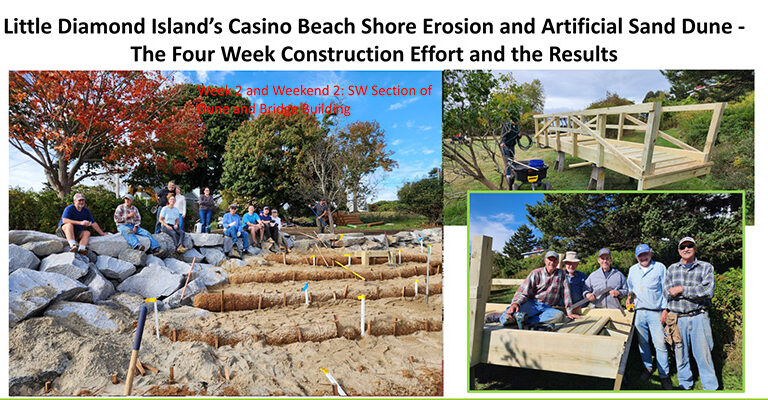I had the opportunity recently to join a 20th anniversary celebration of North Haven Sustainable Housing (NHSH), one of the leading models of housing solutions along the coast.
Since 2005, NHSH has demonstrated that the people who make island communities thrive can, in fact, have beautiful homes that are affordable and attainable. They’ve done this through a visionary group of leaders who understood early on that a permanent home for one is a good investment for all.
The timing of this gathering was perfect, as Island Institute itself is launching a new housing strategy. I can hear murmurs of “Great, but what took you so long?” The truth is that Island Institute has had a toe—and sometimes more—in housing for some time.
A permanent home for one is a good investment for all.
In 2004, we placed our first Island Institute Fellow focused on housing on Islesboro. Many have since followed, working directly on housing or incorporating housing issues into comprehensive planning, aging in place, and economic development projects.
Today, one of our Island Institute Fellows is working with the Peaks Island Home Start initiative on year-round affordable housing (see Mark Gorski’s “Reflections” column in this issue).
We have been an important voice in highlighting the unique challenges of housing on islands. In 2009, we joined with the visionary Genesis Community Loan Fund and the Maine Affordable Housing Coalition to advocate for the successful passage of a $30 million bond for affordable housing, which included dedicated funding for rental units on year-round islands.
Two years ago, responding to interest from islands to learn from one another, we created an inter-island learning group that continues to grow today.
Along the way, we’ve learned that when you start pulling on the housing string, you’ll quickly run into a panoply of complex issues. They include zoning regulations, the quality of housing stock, affordability and financing (especially for first-time home buyers), energy efficiency, accessory dwelling units, the impact of seasonal homes and short-term rentals, and community acceptance.
This list doesn’t include the opportunities along that string, from smarter planning around growth and climate-friendly construction to smart homes supported by the expansion of broadband across the state.
A report earlier this year from the state provides statistics that should galvanize us all into action. Across Maine, we will need to build at least 84,000 new homes by 2030 to meet the need. To afford the median home price ($390,000 in 2024), potential homebuyers would need a household income of at least $100,000.
State-wide data, however, obscures the reality in coastal and island communities. The median home prices along the coast are much higher. Consider Cumberland County at $570,000 or Lincoln County at $520,000.
Putting more homes within reach for more people can’t happen fast enough for the young fisherman I met last summer on Little Cranberry Island. She shared with me that she had moved more than ten times in two years to stay on the island where she fished. The situation had become increasingly untenable, but she thought she had a good lead on a possible full-time home. Fingers crossed.
Crossing fingers isn’t a promising strategy to solve this pernicious challenge to community capacity and long-term sustainability. Together, we can do better for her and all the others who want to work in and contribute to the communities where they live.
I’m looking forward to sharing more as our housing strategy evolves over the next six months to meet the enormity of this challenge and to support the communities and people that define our extraordinary coast.
Kim Hamilton is president of Island Institute, publisher of The Working Waterfront. She may be contacted at khamilton@islandinstitute.org.





